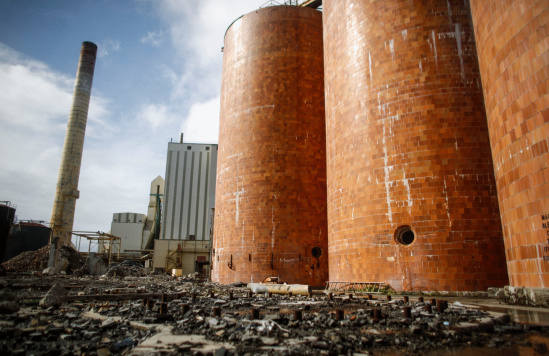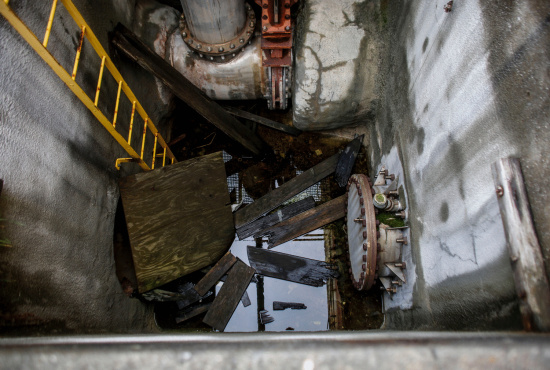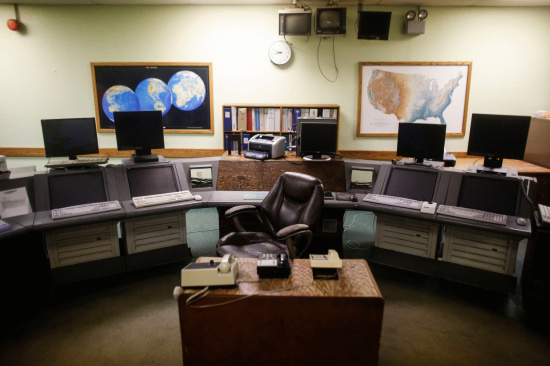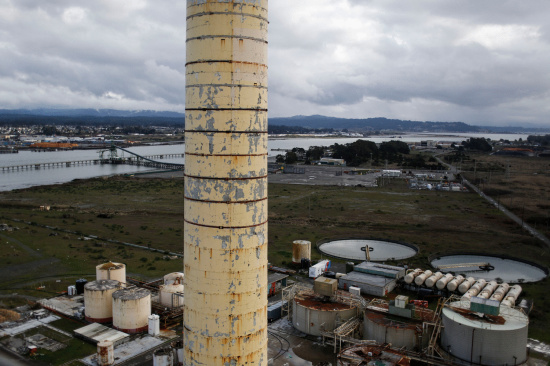Chemical tanks.
The abandoned Freshwater (nee Louisiana-Pacific) pulp mill makes many impressions. The enormousness of its parts. The toxicity of its legacy. What I wasn’t expecting were the strange, sad remains of the human element that once breathed life into place.
In 2008, then-owners Evergreen bailed without warning. As a result, offices and work stations still host some personal effects, still contain paperwork and booklets someone expected to return to. Walking through offices and conferences rooms reminded me of walking through homes-turned-museum, where scenes have been carefully designed to replicate daily life – except the history of the mill, even its very abandonment, is evidence of carelessness. While most of the workers undoubtedly followed the safety protocol emphasized in signage throughout the mill (“Make Safety Your First Step, Not Your Last!”), the various owners were guilty of polluting our coast, our air and ultimately damaging the lives of the very people keeping the mill going.
As Humboldt Surfrider’s chairperson, I have a particular interest in the future of the mill. It was Surfrider, after all, who insisted the government hold L-P (and Simpson) accountable to the law. Rather than obey the law, Simpson fled to Chile, where pulp mill pollution continues to be a problem for that country. At least L-P gave better stewardship a go, switching to a chlorine-free process. But that was hardly a cure-all, as the stunning amount of toxic chemicals and sludge still housed on the site attest to. And Evergreen split town at least in part, one can assume, because abandoning its business and workers was a preferable option to investing in the equipment necessary to maintain legal air and water quality standards.
The empty mill stands in testament to how wedding environmental protection to economic development is crucial in public policy. We can’t keep leaping first and looking later. Most environmental advocacy is in reaction to damage being done. We’re lucky when we get to be proactive – as in the current situation with the Harbor District’s ownership of the mill site. People seem relieved, I told CEO Jack Crider. People are happy something will be done with the empty site and extremely happy the dangerous residue is being cleaned up or at least better contained. As Jack pointed out this thing and that thing and what could be done here and there and about which caustic chemicals had been cleaned up, the overriding feeling was that of optimism. Regardless of what particular businesses might manifest there, the community can feel a least a little assured that good stewardship is part of the mix. And because the mill is now owned by a public entity, citizens can influence and stay informed (via humboldtbay.org). It’s the end of a sad story out there – and hopefully the beginning of a new and better one.
— Jennifer Savage
- PREVIOUSLY: New Visions for Old Pulp Mill



























CLICK TO MANAGE